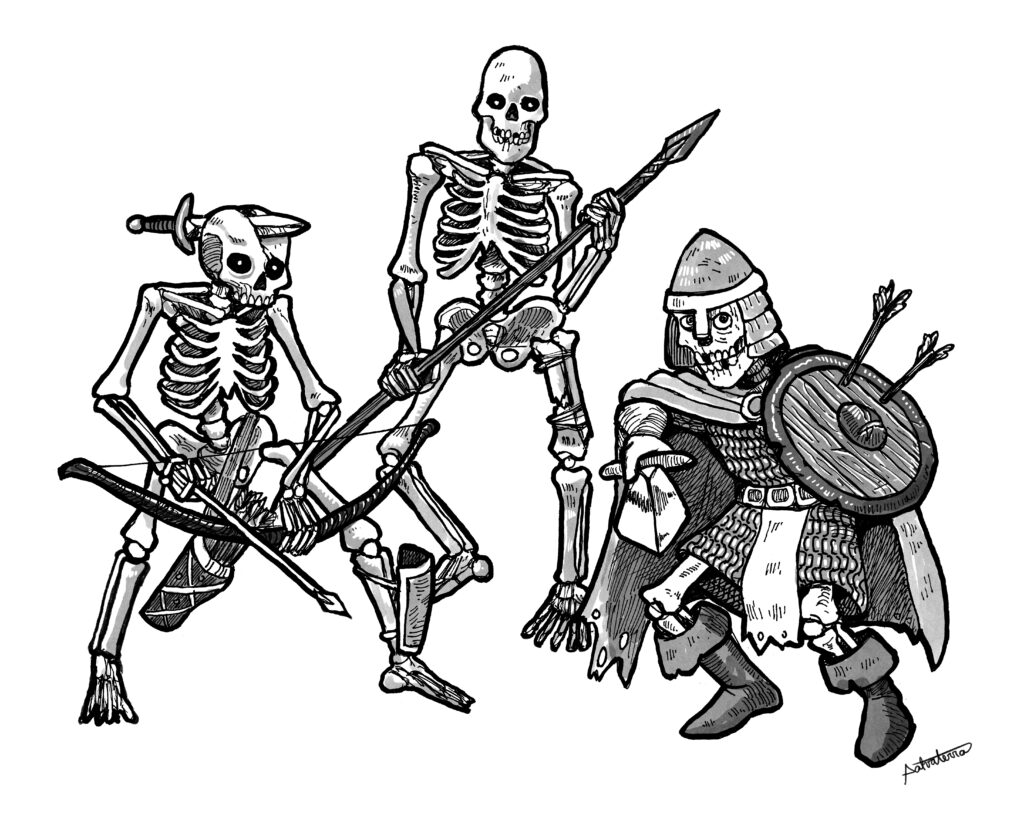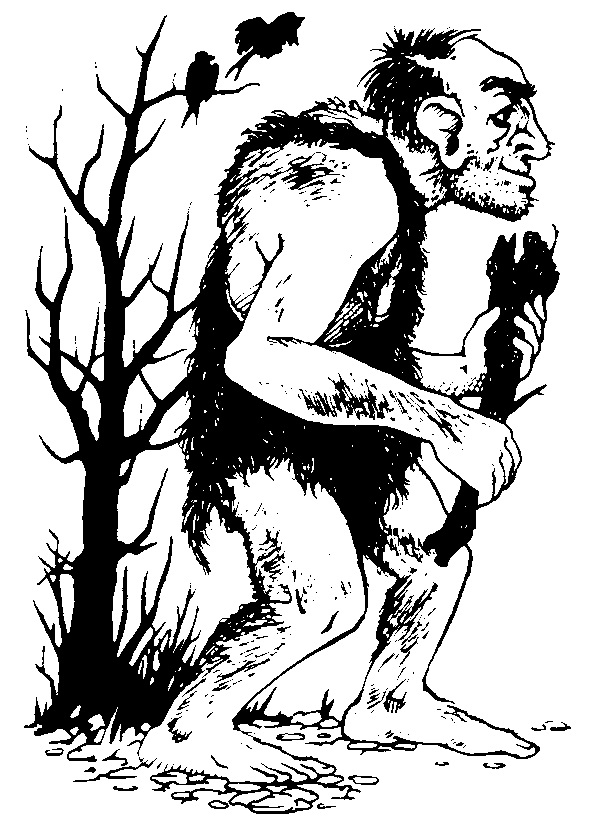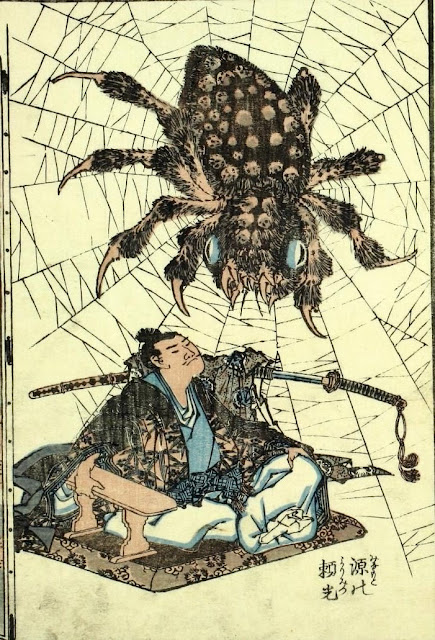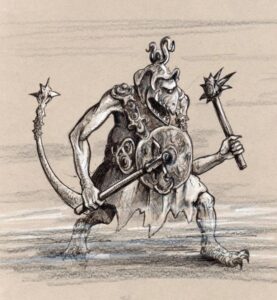Three Unique Skeletons
If you’re wondering, no, I’ve not forgotten about the goblin spider lair. I just have to remember to find the maps that I was working on.
And, so, onto today’s post.
Patreon artist Fernando Salvaterra recently posted this fun illustration of three skeletons about to teach a group of tomb trespassers a lesson about property rights. Nota Bene: If you click on the pic, it embiggens.
Each skeleton has a magic item it uses in combat. These magic items detect as evil. Each has the same deleterious effect when used by non-evil creatures, namely that the creature suffers a -1 penalty to saving throws against fear effects per item used.
The Archer
Number: 1
Size: Medium
HD: 2 (d12) (13)
AC: 13
Saves: P
Move: 30 ft.
Attacks: 2 with Short Bow (1d6 plus magical effect) or 1 with Short Sword (1d6)
Special: +1 or Better Weapon to Hit, Magic Quiver, Regeneration 1, Undead
Int: Average
Alignment: Neutral Evil
Type: Undead (Unique)
Treasure: 4
XP: 56
Combat: The Archer prefers ranged combat, firing two arrows per round from its shortbow. If forced into melee, it pulls the short sword from its skull. The Archer cannot be harmed by nonmagical weapons, and even magical slashing or piercing weapons inflict but half damage to it.
Magic Quiver: The Archer’s magic quiver holds a dozen arrows. Each day at sundown, the magic quiver refills with a dozen arrows. When an arrow is pulled from the magic quiver, roll 1d6 to determine that arrow’s magical effect:
1-4 = +1 to hit and damage
5 = +2 to hit and damage
6 = +3 to hit and +1d6 damage against a living creature
Regeneration: The Archer regenerates 1 hit point per round until reduced to 0 hit points, at which time it regenerates 1 hit point per hour. The Archer cannot regenerate damage from holy water.
Undead: The Archer is immune to poison, sleep effects, paralysis, stunning, disease, death effects, and all mind-affecting spells (charms, compulsions, et cetera).
The Spearman
Number: 1
Size: Medium
HD: 3 (d12) (20)
AC: 13
Saves: P
Move: 30 ft.
Attacks: 2 with Magic Spear (1d6+1)
Special: +1 or Better Weapon to Hit, Magic Spear, Regeneration 1, Undead
Int: Average
Alignment: Neutral Evil
Type: Undead (Unique)
Treasure: 4
XP: 120
Combat: The Spearman prefers melee combat, attacking twice per round with its magic spear. The Spearman cannot be harmed by nonmagical weapons, and even magical slashing or piercing weapons inflict but half damage to it.
Magic Spear: The Spearman’s magic spear is a +1 weapon. If thrown, it splits into two spears that may target any two creatures within 10 feet of each other (or both may target a single creature within spear range). The thrown magic spears disappear at the end of the round, reappearing in the Spearman’s hand as a single spear.
Regeneration: The Spearman regenerates 1 hit point per round until reduced to 0 hit points, at which time it regenerates 1 hit point per hour. The Archer cannot regenerate damage from holy water.
Undead: The Spearman is immune to poison, sleep effects, paralysis, stunning, disease, death effects, and all mind-affecting spells (charms, compulsions, et cetera).
The Captain
Number: 1
Size: Medium
HD: 4 (d12) (26)
AC: 18
Saves: P
Move: 30 ft.
Attacks: 2 with Magic Sword (1d8+1)
Special: +1 or Better Weapon to Hit, Magic Sword, Regeneration 1, Undead
Int: Average
Alignment: Neutral Evil
Type: Undead (Unique)
Treasure: 4
XP: 224
Combat: The Captain prefers melee combat, attacking twice per round with its magic sword. The Captain cannot be harmed by nonmagical weapons, and even magical slashing or piercing weapons inflict but half damage to it.
Magic Sword: The Captain’s magic longsword is a +1 weapon. Against lawful good creatures, the sword inflicts an addition 1d6 points of damage with a successful hit.
Regeneration: The Captain regenerates 1 hit point per round until reduced to 0 hit points, at which time it regenerates 1 hit point per hour. The Archer cannot regenerate damage from holy water.
Undead: The Captain is immune to poison, sleep effects, paralysis, stunning, disease, death effects, and all mind-affecting spells (charms, compulsions, et cetera).






